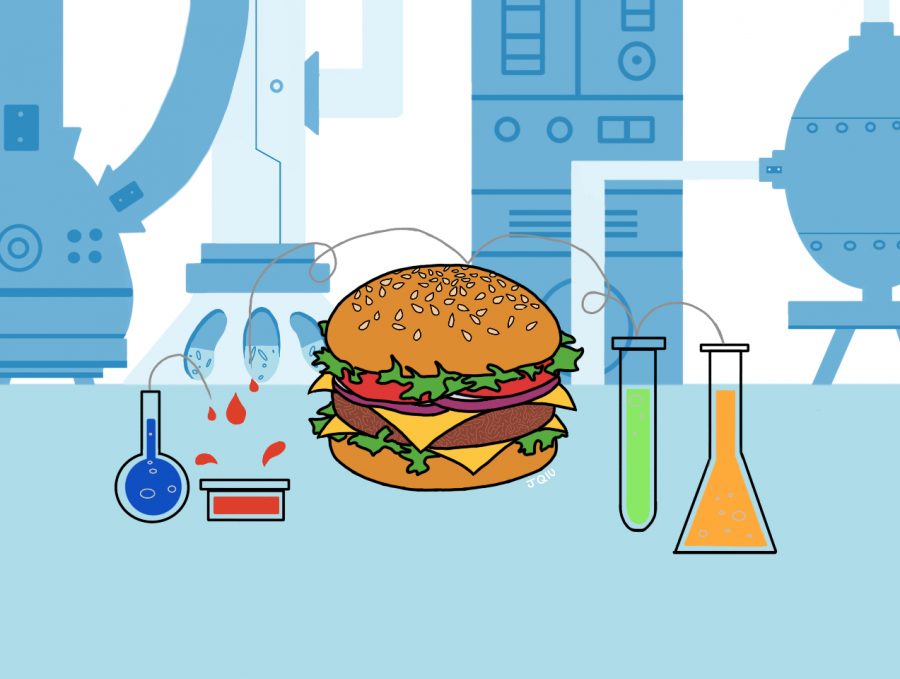Your Hamburger Grown Straight From a Lab
March 30, 2018
Converting from being a meat eater to being pescetarian, vegetarian, or vegan is extremely difficult for many. To help with this type of diet transition, many often turn to imitation meats to slowly get their body used to the change. In addition, many people may not be able to stay committed to being pescetarian, vegetarian, or vegan, but do enjoy consuming these types of foods whenever they can. A recent craze the past few years that may help people like those aforementioned is the idea of “clean” meat — meat that is created in labs from stem cells and not from actual live animals.
More specifically, clean meat is made by extracting stem cells from animals, and then cultivating these special cells so they grow and multiply until a piece of meat is created. According to Dr. Mark Post, CEO of Mosa Meats, one of the first companies to make clean meat, stem cells “start to divide and start to form new muscle tissues…(We) let them proliferate until we have trillions of cells.” Although this may sound simple enough, waiting for new muscle tissues to form is a relatively slow process, taking about nine weeks just to make one hamburger patty! Utilizing stem cells to create tissues is the same process used in the medical field to repair damaged organs or tissues. All of these innovative and amazing uses of stem cells originate from their unique ability to grow into any type of body cell rather than being a specialized cell like other body cells.
Many have agreed that this new clean meat has to taste very similar, if not exactly like real meat, for it to be widely accepted, enjoyed, and used. Multiple authors, including Paul Shapiro, author of “Clean Meat: How Growing Meat Without Animals Will Revolutionize Dinner and the World,” and Bruce Friedrich, co-author of “Clean Protein: The Revolution That Will Reshape Your Body” and CEO of the God Food Institute, have tried the clean meat versions of popular proteins including chicken, duck, beef, fish, foie gras, and chorizo. They both commented that the clean meat does in fact taste like real meat. In fact, Friedrich specified to the public that the meats he tried “taste like meat because they are meat”, just “grown in a completely different way…[it is the] ‘exact same meat’.”
Many may wonder when and where they can try this emerging phenomenon. CEO of clean meat manufacturer JUST revealed that in his opinion, “before the end of 2018 is an accurate timeline” for some products such as chicken nuggets to be offered in restaurants. Author Shapiro believes that by 2021, there will be clean meat in grocery stores for purchase; however, it will likely be at a premium price. Although the first clean meat hamburger in 2013 was $330,000, there is hope that it will become more widespread and easier to make, leading to affordable “clean meat.”
Many interested consumers have questioned the safety and health effects of eating this cultured meat. According to the FDA, “given [the] information we have at the time, it seems reasonable to think that cultured meat, if manufactured in accordance with appropriate safety standards and all relevant regulations, could be consumed safely.” In fact, it can have positive health effects for society because having cultured meat reduces the chances of foodborne illnesses spreading.
Meat consumption is set to rise to 222.8 pounds per person for the year 2018, a startling distinction from older current statistics; however, clean meat production is also expected to rise with it. Many feel that lower meat consumption can be promoted with the addition of clean meat into society and the food industry. Slowly, this dream of clean meat is turning closer and closer to reality.

